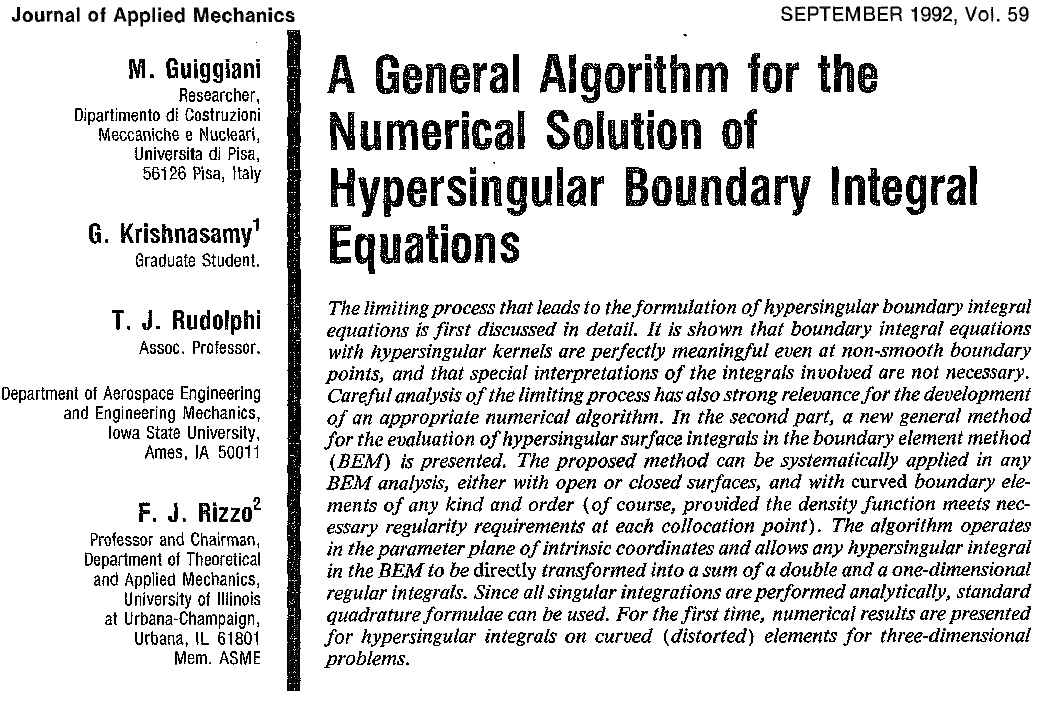Guiggiani's Method – Past research topics
The Boundary Element Method (BEM), also called Boundary Integral Equation Method (BIEM) has been my main research topic for several years. Actually, I started with it during my MSc thesis, thanks to the advice of my supervisors Professor Antonio De Paulis and Professor Costantino Carmignani. I still fondly remember a phone call in July 1980 from Antonio De Paulis suggesting “a new numerical method” as a possible topic. After a while I asked Professor De Paulis to give me his sincere suggestion on what to do. The answer was “I ORDER you to take this new topic for your thesis…”
Actually, Antonio De Paulis had been my mentor since 1977 when, after one of his lessons, I asked him which was the way for an academic career. The answer was “It is not easy…” But since then he constantly, albeit discretely, supported me.
One of the main issues in the BEM is the evaluation of strongly singular and hypersingular integrals. Most people believed that they could not be evaluated directly. I was able to show that they were computable in a direct way and effective way. My algorithm, called the “direct approach” has now become classical (Guiggiani's method). It has been applied in very many different fields like fracture mechanics, earthquake engineering, biology, particle physics, elasticity, plasticity, fluid mechanics, etc. and in commercial codes like LMS SYSNOISE. Two students of mine, Paolo Casalini and Antonio Gigante, helped me in the development of the algorithm for Cauchy principal value integrals. The non-trivial extension to hypersingular integrals was carried out while visiting Iowa State University in 1989-1990. I had the chance to interact with Thomas J. Rudolphi and Frank J. Rizzo, the inventor of BEM. Our paper published in 1992 has now more than 500 citations. In the late 90's I worked with Marc Bonnet at Ecole Polytechnique. We were able to extend the direct approach for singular integrals to the Galerkin BEM. The extension to higher order singularity was done with Attilio Frangi.
 |